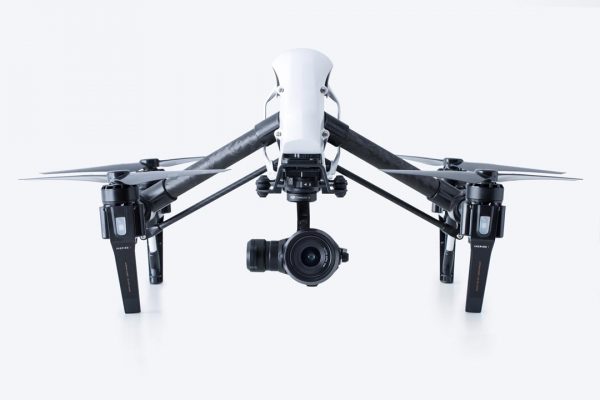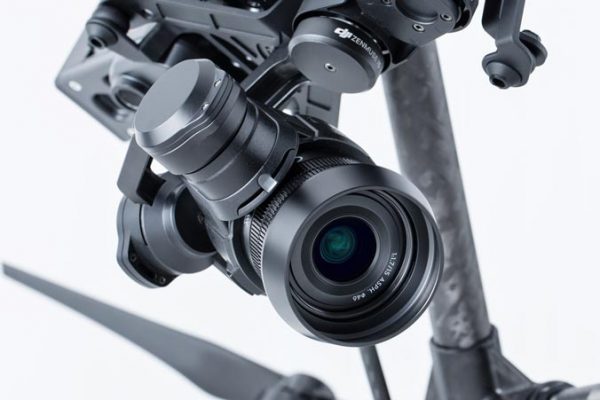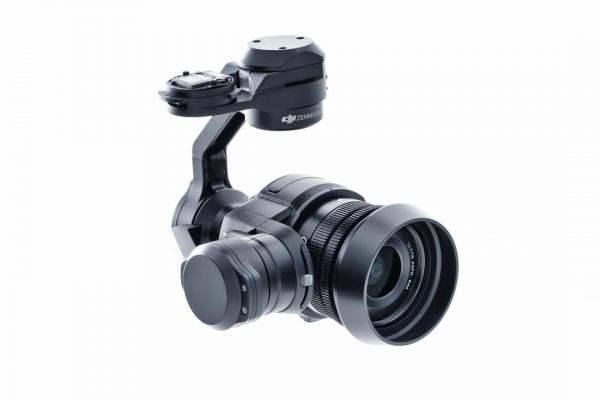By associate editor Elliot Smith:
Drone specialists DJI have announced two new cameras: the Zenmuse X5 and the Zenmuse X5R are both Micro Four Thirds-based and will integrate with the Inspire 1 UAV, allowing users to capture 4K video and 16MP stills from the air.

A replacement for the standard Zenmuse X3 camera, the new units are compatible with four Micro Four Thirds lenses at launch: DJI’s own MFT 15mm f/1.7 ASPH lens, Panasonic’s 15mm f/1.7, the Olympus 12mm f/2.0 lens, and the Olympus 17mm f/1.8. Focus and aperture can be controlled remotely via DJI’s GO app or their Follow Focus system which we saw a demo of at NAB last year.
The sensor features a 2x crop when shooting 1080p and a 2.3x crop in 4K – the same crop factors as found on a Panasonic GH4.

Both cameras have a claimed 13 stops of dynamic range, which the X5R exploits with the addition of D-Log, a flat colour profile for shooting RAW. To deal with the torrent of data that generates, the X5R also allows you to connect to a proprietary mSata-based SSD mounted on the Inspire 1. This then enables you to record CinemaDNG RAW at a bitrate of around 1.7Gbps: a 512GB SSD allows about 30 minutes of recording time. It’s also possible to shoot in HD at 60fps at a maximum data rate of 1.2Gbps. Simultaneously the X5R is also recording a compressed h.264 file to a built-in SD card slot. It’s also possible to bake in a colour profile to the h.264 so your proxies can approximate the look of a final grade.
Ferdinand Wolf, founder of Skynamic.net, has helped DJI with feedback after using pre-production prototypes of the new cameras on location during coverage of the German leg of the World Rally Championship. It’s fair to say he’s pretty impressed – “It’s one of the most stable gimbals I’ve ever used… There’s nothing comparable at the moment, if you want to fly a BMCC 4K for example you’d need a much bigger system.”

The aircraft and the camera are still powered by a single battery, with a flight time of around 15 minutes despite the increased power draw of the 4K sensor. Camera settings have been integrated into the DJI GO app so it’s possible to change aperture, ISO, WB and shutter speed from the ground. In fact the integration of the camera into the Inspire 1 was one of the things that Wolf found most useful during productions: “One of the biggest advantages is you can play back the shot while you’re still in the air – you don’t have to land to review your shot as you would if you’re flying a compact system camera.”
Alongside the hardware release the X5R will be supported by software called CineLight which will allow editing of lightweight proxy files before converting the CinemaDNG files to ProRes.
The Zenmuse X5 is available to pre-order for $4,499 (€4,999), including a DJI Inspire 1 and DJI’s MFT 15mm F1.7 ASPH lens, and will begin shipping before the end of September. The Zenmuse X5R will be available in Q4 2015 for $7,999 (€8,799).
Existing Inspire 1 owners will be able to purchase an X5 camera on its own for $2,199 and swap it for their existing X3. The X5 and X5R are different units though – if you want the RAW features of the X5R you won’t be able to upgrade the X5 through firmware.





